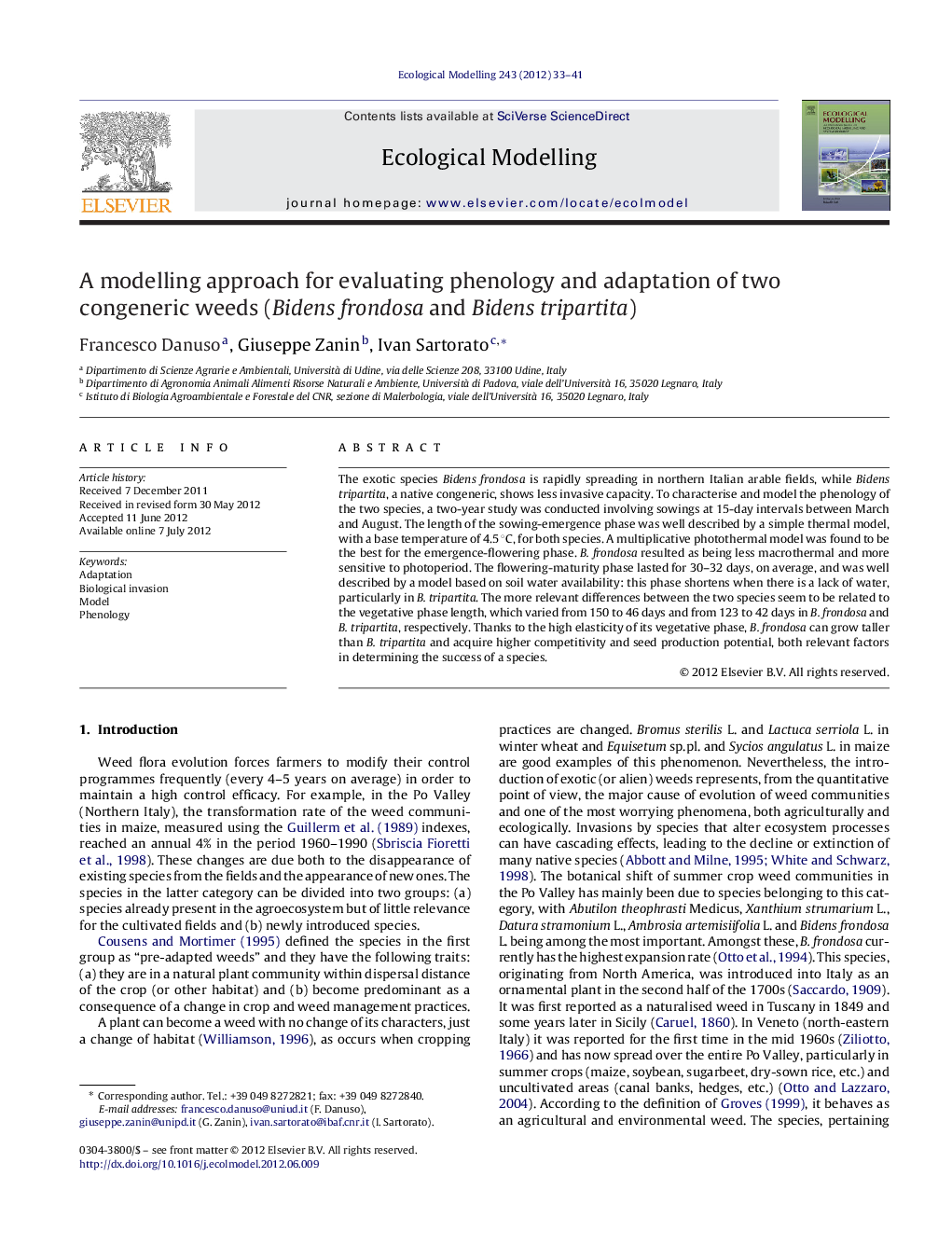| Article ID | Journal | Published Year | Pages | File Type |
|---|---|---|---|---|
| 4376331 | Ecological Modelling | 2012 | 9 Pages |
The exotic species Bidens frondosa is rapidly spreading in northern Italian arable fields, while Bidens tripartita, a native congeneric, shows less invasive capacity. To characterise and model the phenology of the two species, a two-year study was conducted involving sowings at 15-day intervals between March and August. The length of the sowing-emergence phase was well described by a simple thermal model, with a base temperature of 4.5 °C, for both species. A multiplicative photothermal model was found to be the best for the emergence-flowering phase. B. frondosa resulted as being less macrothermal and more sensitive to photoperiod. The flowering-maturity phase lasted for 30–32 days, on average, and was well described by a model based on soil water availability: this phase shortens when there is a lack of water, particularly in B. tripartita. The more relevant differences between the two species seem to be related to the vegetative phase length, which varied from 150 to 46 days and from 123 to 42 days in B. frondosa and B. tripartita, respectively. Thanks to the high elasticity of its vegetative phase, B. frondosa can grow taller than B. tripartita and acquire higher competitivity and seed production potential, both relevant factors in determining the success of a species.
► The phenology of alien weed Bidens frondosa and native Bidens tripartita was modelled. ► Each phenological phase required a different model to be described. ► A multiplicative photothermal model described emergence-flowering phase well. ► Seed ripening phase is shortened by water stress, B. frondosa being more sensitive. ► Invasive capacity of B. frondosa could be related to its longer vegetative phase.
